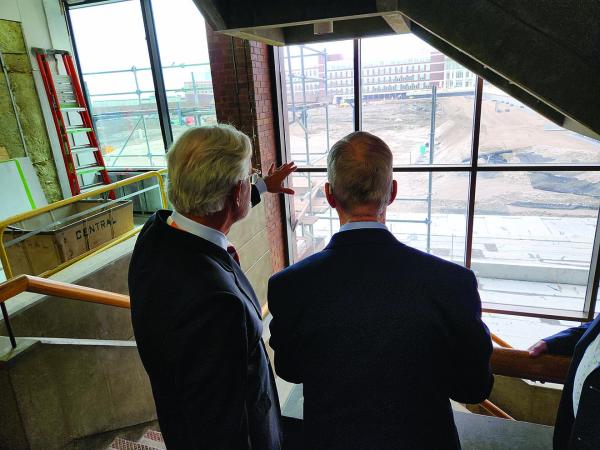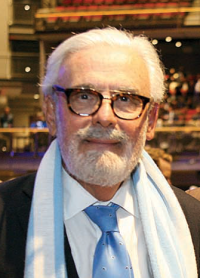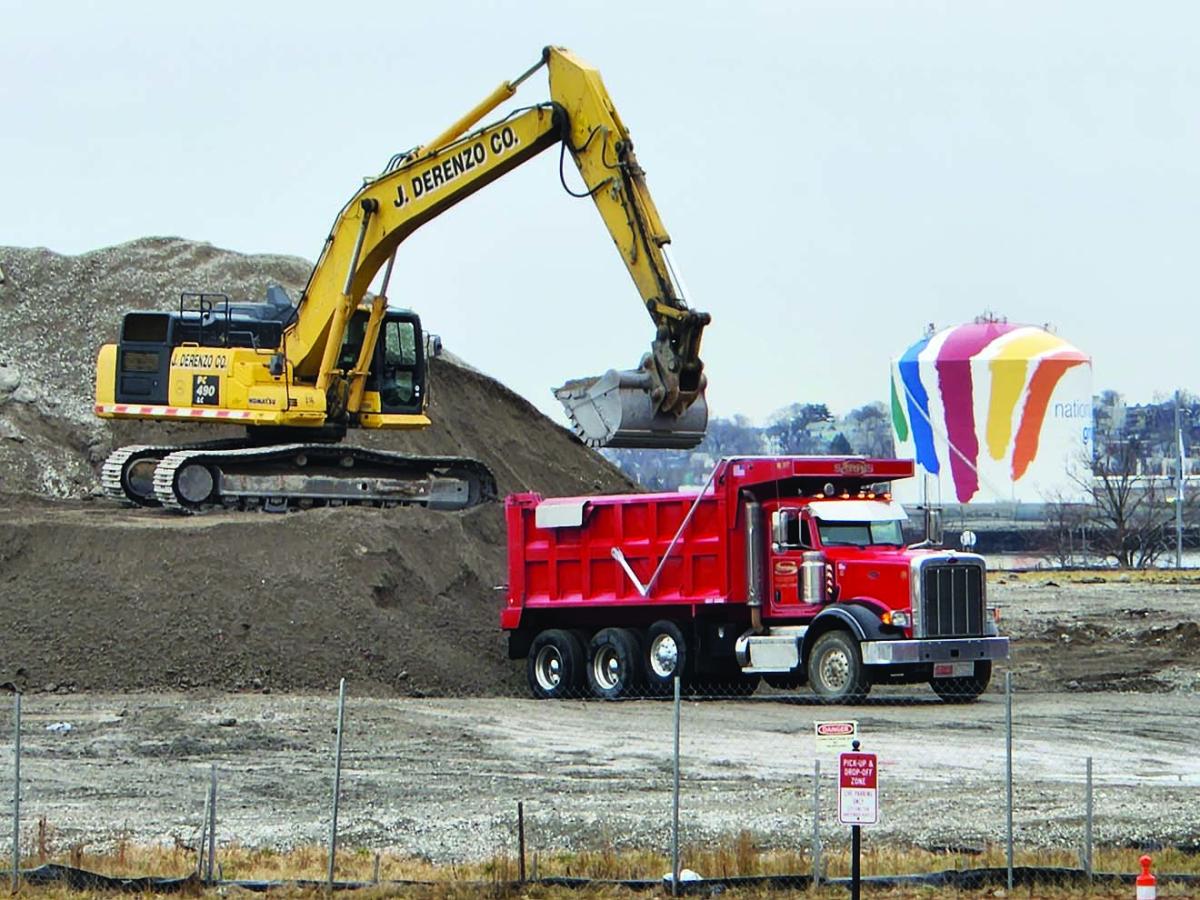February 2, 2023

Chancellor Marcelo Suárez-Orozco shows Congressman Stephen Lynch the construction site that was once UMass Boston’s student plaza. In its place, a new “quad” will be created for students. Gintautas Dumcius photo

Chancellor Marcelo Suárez-Orozco’s third-floor corner office on the UMass Boston campus looks out over dirt mounds surrounding a massive gash, where there once was a science building and a windswept plaza built atop a parking garage.
“This is the embodiment of UMass Boston 2.0,” he says. “It’s a new beginning. We are finally leaving behind the deficiencies that flowed from the original construction of the campus.”
A two-level substructure, which connects the administrative and academic buildings, and the garage were at the center of a scandal over the building of the harborside campus in the 1970s. Two state senators went to prison on extortion convictions, among others, and a blue-ribbon state commission later documented the fraud.
The decrepit 1,560-car garage closed in 2006, but the campus continued to crumble. In 2010, a 385-pound section of concrete fell from a lower-level ceiling beneath Wheatley Hall, an academic building.
“The substructure, I’m happy to report, is done, it’s safe, it’s sound,” Suarez-Orozco told the Reporter in a sit-down interview last week.
Where there was a plaza and mounds of dirt, a new courtyard, or quad, will “reorient the university toward a green space for student activities, for student study, for student work, for student enjoyment,” according to the chancellor.

Much of the harborside campus has been a construction zone for decades, as school officials work to fix problems caused by shoddy workmanship from the 1970s. Gintautas Dumcius photo
As the construction scandal unfolded in Massachusetts decades ago, Suarez-Orozco was 17 years old and on his way to the US, fleeing the fascist generals of Argentina. “I am a man who constitutionally lives looking forward,” he said. “When you’re a refugee, you don’t want to look back.”
So, when he arrived in August 2020, from California, where he was a UCLA dean, Suarez-Orozco said he focused on UMass Boston’s potential as the city’s only public research university. His time as chancellor, and the reconstruction on the campus, also overlaps with a construction boom happening on Columbia Point and along Morrissey Boulevard.
The $5 billion “Dorchester Bay City” project, with construction expected to last nearly two decades if it gains the necessary governmental approvals, will bring lab space to the area, as well as commercial and residences while remaking the roadways. The former Boston Globe headquarters, across the boulevard from UMass Boston, is also bringing in biotech companies to fill the former newsroom and business and production venues.
Suarez-Orozco is seeking to establish an additional construction project to take advantage of the new companies flocking to the area: A human capital pipeline.
“What I would like to see for our students, for UMass Boston students,” he said, “is to finally have the opportunities for internships, for pathways to work that students on the other side of the river take for granted.” The chancellor once worked at Harvard University.
UMass Boston, which has more than 16,000 students, is partnering with MassBIO, a biotech trade group that is opening a life sciences workforce training center inside the former Globe headquarters. It’s part of a larger effort that Suarez-Orozco has developed. An expert on immigration and demographic changes, he has given a presentation to companies and entities with white and older workforces that pitches a pipeline of diverse employees.
“Massport,” he said, referring to the quasi-public agency that runs Logan International Airport, “now has paid internships, scholarships, and pathways to work for our students. I replicated this now with Deloitte. I made a presentation on the changing landscape in the Commonwealth and the head of Deloitte Boston came to see me and said, ‘Let’s partner.’ Same model. Paid internships, mentorships, opportunities for work.”
The JFK Presidential Museum and Library, just around the corner on Columbia Point, is another place. “Librarianship and museumship is a very white field of work,” he said. “They want to diversify the pipeline. They want to diversify the workforce. Now we have an arrangement with the library and museum. Same model. The idea is to get our students jobs.”
The only section of the state’s population that is growing is immigrant families of color, according to the chancellor, and it comes as the search for talent is what he describes as a “fierce” battle.
“What you’re seeing in the K-12 arena now coming up the pipeline is the most diverse cohort of young people in the history of the Commonwealth,” he said. “At a time when that’s the only sector of the population that is growing, if we don’t connect with, if we don’t serve, if we don’t ease their transition, to citizenship and to the labor market of the 21st century, we are not doing our job.”
The focus on a diverse student body, and in particular students who come from immigrant families of color, will also help UMass Boston prepare for the expected decline in the number of college students in the coming decade. “What we’re seeing in the Commonwealth,” said Suarez-Orozco, “is that we’re an aging population, below replacement in terms of new births and a net outflow of folks to other states, which suggests real tough times moving forward, demographically speaking. Here’s the proviso, and here’s the optimism I carry: That’s true for all demographics except for the demographic we serve.”
Campus officials are also looking for out-of-state and international students, in part due to UMass Boston tuition costs being less than the private universities that surround its campus.
“That mitigates the constant, ever-present demographic concerns that every chancellor today has to worry about and think about, the first thing they wake up in the morning,” Suarez-Orozco said.
Boston is the “cognitive capital” of the world, he added. “There will always be interest in what a university like UMass Boston is offering, particularly at our price point because there has been an arms race in higher education costs.”


